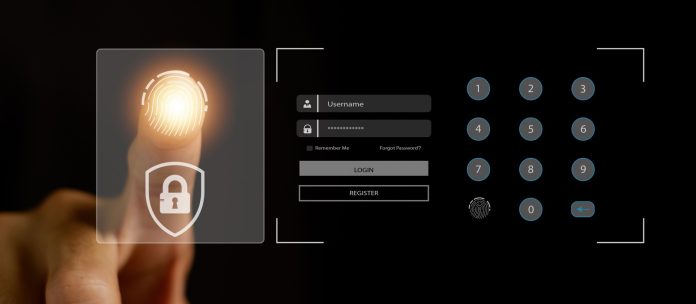Businesses today face a tricky balancing act. On the one hand, they need watertight security to keep the fraudsters at bay while maintaining regulatory compliance. On the other, they also need to impress users with smooth signups and lightning-fast verification.
Get it wrong, and your business pays the price. Too much friction, and your sign-up rates flatline. Too little security, and you get overrun with bots and stolen identities. Lose-lose.
But it doesn’t have to be this way. Thanks to the latest developments in AI and biometrics, it’s possible to have your cake and eat it too. You can stop fraud in its tracks while simultaneously delivering signups that are faster than a Shinkansen bullet train.
In this post, we will show you how leading businesses are striking the perfect balance between security and user experience. You’ll discover the new paradigm in identity verification that eradicates friction while annihilating fraud. Let’s dive in!
Fraud is Exploding – And Users Know It
Cybercrime is going nova. And we’re caught in the blast radius.
According to a recent report, a staggering 69% of organizations experienced significantly higher fraud losses in 2023 compared to 2022. At the same time, over a third (35%) of consumers feel they’re bigger targets for fraud than ever before. Their top concern? Identity theft.
And their fear is not unwarranted. Synthetic identities are on the rise while phishing sites and stolen credentials are running rampant online.
For businesses, this creates the perfect storm. As fraud balloons, users grow anxious and mistrustful. Nothing bursts the signup bubble faster than mandatory obscure security questions. People just don’t want to be forced to root around for utility bills or bank statements. However, lax verification hands the keys to fraudsters.
The Roadblock of Traditional Verification
Traditional identity verification is a nightmare for users – and a headache for businesses.
Remember filling out endless signup forms by hand? Uploading documents just to access your account? Answering seemingly intrusive questions like “What was the name of your first pet?”
Those frustrating experiences still haunt users today.
With these outdated processes, “form fatigue” sets in quickly, and even loyal users abandon signups when forced to hunt for utility bills or scan IDs.
For businesses, clunky verification crushes conversion rates. When users hit roadblocks, they bail. With every extra obstacle you make users jump over, signup rates decrease. It’s a lethal combination. Frustrated users. Plummeting signups. Crumbling trust. Worst of all, the front door is left wide open for fraud.
Clearly, the old model of identity verification is broken. The future lies in making security seamless. But how?
The New Paradigm: Convenience and Security
There’s a new paradigm emerging in identity verification. One where security and user experience go hand in hand. Advanced technology means you can have it both ways – zero friction, and 100% fraud protection. Here’s how it works.
AI and Biometrics Enable Instant, Invisible Checking
Gone are the days of clunky security processes. Modern verification solutions use advanced AI and biometric technology to confirm user identities seamlessly behind the scenes. This removes the need for filling out endless forms or uploading documents. Users can stay immersed in your app experience while multi-layered identity checks happen instantly without any friction. Face matching, document validation, and liveness checks powered by AI are all imperceptible to users but extremely effective at stopping fraud in its tracks.
Customized Workflows Optimize Every Touchpoint
One-size-fits-all security frequently backfires. Today’s cutting-edge identity verification technology creates customized workflows for users based on their risk profiles. Low-risk users can glide through friction-free while higher-risk cases trigger progressive checkpoints only when needed. This adaptive approach ensures user experience stays smooth and seamless while security quietly tightens behind the scenes as required. With customized journeys, you get the best of both worlds – happy users and tight protection.
The Latest Weaponry Keeps Fraudsters at Bay
Advanced biometrics and AI take security to the next level. Every digital signal related to a user – phone, email, IP address, device fingerprints – is analyzed instantly by sophisticated technology. Machine learning models can detect high-risk fraud patterns early and stop them in their tracks before damage is done. Synthetics, bots, and other bad actors are severely hampered by this modern weaponry. Leading solutions leverage the full power of technology to keep fraudsters where they belong – out in the cold.
Best Practices for Frictionless Security
Of course, technology alone isn’t going to strike the perfect balance between security and user experience. You need the right strategy and processes in place as well. Here are some best practices for implementing frictionless security effectively:
- Analyze user data to optimize workflows – Continuously study signup drop-off rates, high-risk markers, and other analytics to constantly improve verification flows. Rigorously A/B test different approaches to identity checking.
- Start user-friendly, add friction when needed – Initially begin with minimal friction during signups and only prompt seamless identity checks when risk is detected behind the scenes by algorithms. This balanced approach maintains UX while still adding security.
- Use technology focused on smooth UX – Carefully choose identity verification solutions that are specifically designed and developed to be invisible and seamless for users across platforms.
- Educate users on verification – Proactively communicate why an identity check is important for user security and how it protects personal data. Transparency builds trust and alignment.
- Ensure inclusive design – Verify that workflows work smoothly across demographics, factoring in potential differential access to technology and identity documents.
- Remain agile, monitor results – Stay ready to quickly adjust approaches and flows based on performance data, user feedback signals, and other insights. Identity verification optimization is an ongoing process.
Final Word
Companies that analyze their data, customize journeys, leverage AI, and keep users in the know will thrive in this new era. They’ll reduce fraud while growing revenue – safely and securely. Thanks to technology, identity verification doesn’t have to be a zero-sum game anymore. Prioritize the user experience, tighten security, and watch your business flourish. Everyone wins.



































